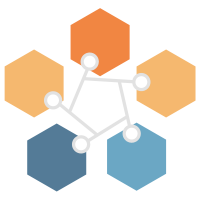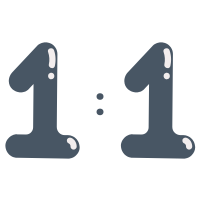Agile and traditional project management key differences
Managing a project means making choices about how to plan, track progress, and handle unexpected changes. For years, traditional project management methods, often called waterfall, were the standard. These methods rely on detailed upfront planning, structured phases, and a clear path from start to finish. Every step is carefully mapped out, leaving little room for adjustments once the project is in motion.
Then came Agile, a more flexible approach designed to handle change, deliver value quickly, and continuously improve. Agile teams work in short cycles, adapt to feedback, and adjust priorities as needed. While both approaches aim to deliver successful outcomes, they take very different paths to get there. Understanding these differences helps teams choose the right approach for their needs or even mix elements of both to create a balanced workflow.
Agile series
What is Agile? A fresh approach to project management
Agile and traditional project management key differences
How agile teams collaborate and get things done
How agile teams stay organized with ceremonies and frameworks
Overcoming challenges in Agile projects
Measuring success in agile projects
Traditional planning vs Agile adaptability
Traditional project management follows a predictive approach. Before any work begins, teams define the full scope of the project, estimate timelines and costs, and create a detailed roadmap. Each phase - such as requirements gathering, design, implementation, testing, and deployment - must be completed before moving on to the next. This structured approach works well when project requirements are stable and unlikely to change, such as in construction or large infrastructure projects.
Agile takes a different approach by embracing adaptability. Instead of trying to predict every detail upfront, teams start with a general direction and refine details as they progress. Work is divided into short cycles, often called iterations or sprints, where small, usable portions of the product are built and tested. After each cycle, feedback is gathered, and adjustments are made before moving forward. This allows teams to stay responsive to customer needs, market changes, or technological advancements, making Agile an ideal choice for projects where flexibility is important.
Responding to changes
In traditional project management, change is often seen as a disruption. Since everything is planned in advance, making adjustments mid-project can be difficult, time-consuming, and expensive. If a stakeholder requests a major change after development has begun, the team may need to revisit earlier phases, leading to delays and cost overruns. This approach is effective when requirements are well-defined from the start but can be challenging when unexpected shifts occur.
Agile is built to embrace change rather than resist it. Since work is done in short, iterative cycles, teams can quickly adjust based on new information, evolving customer needs, or shifting business priorities. Changes do not require a complete project reset but are incorporated into the next iteration. This flexibility makes Agile particularly useful in industries where innovation and customer preferences evolve rapidly, such as software development, marketing, and product design.
Progress tracking and deliveries
Traditional project management relies on milestones to measure progress. A project is divided into major phases, and each phase must be completed before moving to the next. For example, a software development project might spend months gathering requirements and designing the system before any coding begins. Testing may not happen until the end of the project, leaving little opportunity to fix issues early. This structured approach ensures thorough planning but can create bottlenecks if something does not go as expected.
Agile focuses on continuous delivery rather than waiting for major milestones. Instead of holding back progress until the entire project is complete, Agile teams release small, functional improvements frequently. Working software, or a usable product, is the main measure of progress. Teams can test and validate their work earlier, reducing risks and ensuring that the final product meets real user needs. This approach also keeps stakeholders engaged, as they can see regular improvements instead of waiting months for a final release.
Teams structure and collaboration
Traditional project management assigns clear roles and responsibilities to team members. A project manager oversees the entire process, business analysts gather requirements, developers build the solution, and testers check for issues before launch. Work is typically passed from one team to another in a linear fashion, which ensures accountability but can slow down collaboration and decision-making.
Agile teams operate with more flexibility and shared ownership. Instead of rigid hierarchies, Agile teams are cross-functional, meaning developers, testers, designers, and business representatives work closely together throughout the project. Roles are often less fixed, and teams are encouraged to be self-organizing, deciding how to best approach their work rather than following strict top-down instructions. This collaborative approach allows teams to adapt quickly and make faster decisions, leading to a more efficient workflow.
Choosing the right approach
Neither Agile nor traditional project management is the perfect solution for every situation. If a project has clear and unchanging requirements, a structured approach like waterfall can provide the predictability needed to deliver on time and within budget. However, when flexibility and ongoing improvements are key, Agile provides the adaptability needed to stay aligned with customer needs and evolving priorities.
Many teams today take a hybrid approach, combining structured planning with Agile’s flexibility. For example, they may define high-level project goals upfront while still allowing teams to adjust their approach in response to feedback. No matter which method is used, the ultimate goal remains the same: delivering high-quality results efficiently. In the next article, we will explore the Agile ceremonies that keep teams aligned, focused, and productive in their day-to-day work.




0 Comments